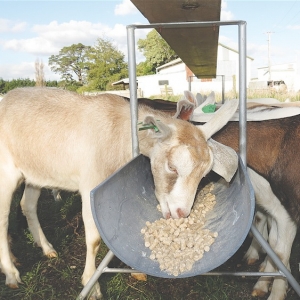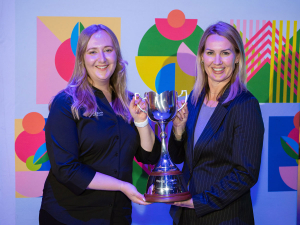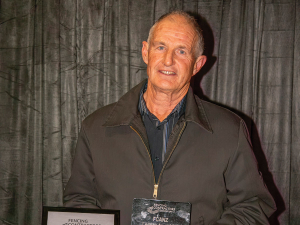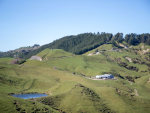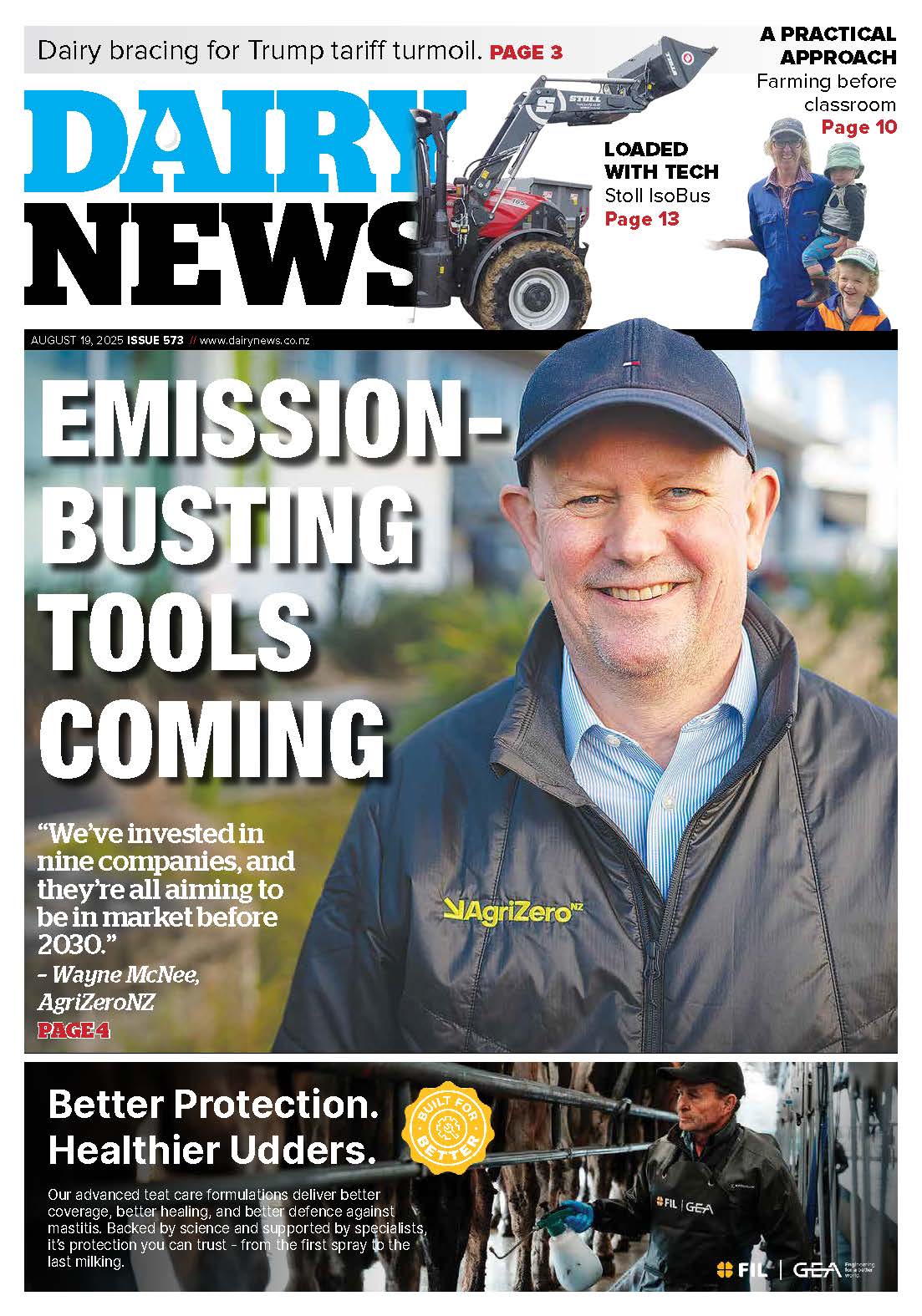The river steamer is getting up steam as it prepares to take passengers up the river and people are leisurely shopping among a huge range of food and other goods on sale at the market.
Amidst it all Brian and Rae Doughty, dairy goat and dairy cow farmers, from a gazebo at their car boot, are busy selling the specialty cheeses they have made that week.
Not all their product is sold here, but it’s good promotion and catch-up with regular customers. Their goat cheeses are popular and people drop by to taste and buy. Their product might aptly be called ‘Lonely Goat’, but they are not short of buyers.
They bought their farm in the Brunswick area of Whanganui in 1991 while Brian was working as a livestock officer for AsureQuality and Rae for the local vet club. She was also an AI technician.
“The way we came to find the farm was because I knew the guy who owned it and I often used to look at the house and think ‘I’d love that house’,” says Rae.
“Then his marriage broke up and he had to sell. He rang us on the Wednesday and said ‘if you are still interested in the farm I am listing it on Friday’. We sat up all night doing the sums to see if we could afford it because at that stage I was living on 50 acres and Brian was living in town. We had to decide whether to sell up and make the figures work, and they did eventually.”
They started off with just 53 cows and built the herd up to 140 in 2001-02. Despite the demands of the farm, the couple kept their off-farm jobs – by their own admission ‘pushing it’ or perhaps slightly mad. These were the days before Fonterra, so the local dairy company, Kiwi, was happy to take their milk.
Before long, Brian and Rae decided to get rid of most of their cows and go to drystock, keeping just a few cows to help them rear calves. Meanwhile Rae had a hankering for goats – having milked them in a previous life. They saw some at a sale and another lot advertised in Waikato but the person selling them “wanted big money,” says Rae.
“While we were away she rang and said we could have them for $60 each or they would go to the works so we bought 24. That was in May and they were supposed to kid in August. The first one kidded the next day and we had no sheds or milking plant – nothing, so it was a mad panic.”
They converted the dairy shed to milk the cows on one side and the goats on the other. Each has its own systems, with less vacuum for the goats.
With the arrival of the goats, Brian decided to go back to cows, eventually settling on 60 which work in well with the 70 goats on the 88ha property.
Incidentally, Brian sells his milk to Open Country which is happy to have a small supplier. The cows produce about 12,000kgMS a year.
The first day the Doughtys milked the goats and cows together was one to remember, says Rae. Things didn’t quite go according to plan.
“I took the grain in for the goats and they all rushed into the shed and we milked them and it was wonderful. Brian was milking cows on the other side and the cows had grain too but they dropped it on the ground as cows do.
“When I let the first row of goats out and they saw the grain around the cows they were onto it. The cows crapped everywhere, they kicked their cups off and he was yelling at me to get the b…. goats out and they wouldn’t go. It was so funny… but it wasn’t funny at the time.”
Now they have a system which stops the goats getting at any spilled feed, instead offering the goats extra grain from a trough when they finish milking. Goats are intelligent and will do anything for food, Rae says.
The goats were bought for cheesemaking and by her own admission Rae didn’t do her homework; she thought she could just make cheese in the kitchen and sell it. For about a year she practised making cheese in the kitchen until they built a proper cheesemaking room which met all MPI’s stringent requirements.
While the cheese house is new, much of the equipment is second-hand, but it works fine, Rae says.
“I love going into the cheese room and shutting the door. There is no telephone or radio in there. It’s my space. But since I hurt my knees Brian comes in and helps to pasteurise the milk.”
The goats produce about 120L of milk a day; about 80L is used for cheesemaking, the remainder goes to feed kids taken from the does about four days after they are born in August.
The Doughtys also sell a small amount of goat milk at the farmgate. Production is seasonal, from August when they kid to March when the does are dried off. This means from about now on no new cheese can be made and only a limited supply is kept in stock.
“We sell the cheese at the market, through two outlets in Auckland and one in Wellington, and a local delicatessen,” Rae explains.
The Doughtys started with the Saanen milking goats (the Friesian of the goat world); now they also have Anglo-Nubian (the Jersey) and have a Toggenburg buck to add to the mix.
The two herds milk well together, the cows twice a day and the goats once. While Rae would like both to be on OAD, the reality is the dollars, says Brian.
“I know OAD is alright, but by Christmas time I’d produced as much milksolids this year as I had for the whole of the season last year and I will stick to TAD,” he says. The only caveat on that is this year Brian went to OAD with his cows in February as the dry spell set in.
The Doughtys have an all pasture system with just the odd bit of grain fed to get the animals through tough patches.
Says Brian, “We had hoped the cows would go through till the end of May, but because of our dry spell I pulled the plug the other day because all I was doing was compromising next season. I was making as much money as I was spending, so I decided to stop and dry the cows off.”
The Doughtys are past the traditional retirement age, but will not quit their unusual farming operation any time soon.





